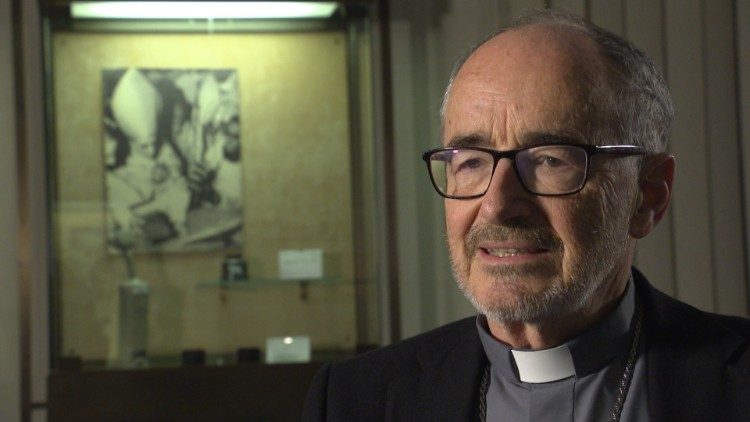
Cardinal Czerny: Open our eyes to discover displaced persons
By Vatican News
The âfundamental orientationâ of the Vaticanâs new Pastoral Orientations on Internally Displaced Persons âis to open our eyes and discover the displaced people nearby and far awayâ, says Cardinal Michael Czerny, SJ, Under-secretary at the Migrants and Refugees Section of the Dicastery for Promoting Integral Human Development.
Following the presentation of the new Pastoral Orientations on Tuesday, Cardinal Czerny spoke with Sr Bernadette Reis of Vatican News.
Seeing those who are invisible
He said the first pastoral response to internally displaced persons (IDPs) is to âsee those who until now have been invisibleâ. Because of the unique situation of internally displaced persons â people who have been uprooted and forced to leave their homes but have not crossed international borders â it is easy for them to be ignored or overlooked. Sometimes internally displaced people are clustered together and might look like refugees. âOthers have disappeared into the citiesâ and are âpractically invisible to their neighboursâ.
Cardinal Czerny said it is important for the Church âto recognize them, reach out to them, and then meet the needs ⊠remembering always at these are also citizens of the same country that weâre in and therefore we might not take their problems so seriously. But in fact, they are in great need.â
Welcome, protect, promote, integrate
In preparing the new Pastoral Orientations, the Migrants and Refugees Section then âapplied the Holy Fatherâs very solid doctrine to their situationâ, asking the question, âWhen we discover these people, what can we do for themâ. Cardinal Czerny gave the answer: âWe can welcome them, protect them, promote them, and integrate themâ.
Asked about what Catholics can do concretely to help internally displaced persons, Cardinal Czerny said, âThe best thing would be to get in touch with someone in the Church whoâs working with migrants and refugees. Often the word âdisplacedâ is not in their title, but thatâs included implicitlyâ. He said that raising the issue of displaced persons in the local Churches will lead to responses as to how best to address the particular circumstances in each situation.
When we do that, Cardinal Czerny said, âpeople will be surprised to discover the IDPs among them, but will also be surprised to discover how the Church is trying already to respond and how they can helpâ.
Full interview with Cardinal Czerny
Below please find a transcription of Cardinal Michael Czernyâs interview with Sr Bernadette Reis:
Vatican News: Can you give us a general sense of the new document? What are the overarching âpastoral orientationsâ the title speaks of?
Cardinal Michael Czerny: The fundamental orientation is to open our eyes and discover that the displaced people nearby and far away. So thatâs the first: letâs see those who until now have been invisible.
And then weâve applied the Holy Fatherâs very solid doctrine to that situation and said, âWhen we discover these people what can we do for them?â We can welcome them, protect them, promote them and integrate them.
VN: The pontifical orientations identify numerous challenges regarding IDPs. Which, in your opinion, are some of the most important priorities for the Church to address right away?
MC: I would say the most important one is a to get to know the IDPs that weâre talking about in each particular situation, and respond to their needs, because the situations are different. There are IDPs who are clustered, and in some ways would look to ordinary people like refugees. Others have disappeared into the cities and are completely, you might say practically, invisible to their neighbors. So for the Church to recognize them, reach out to them, and then meet the needs â which might be educational, might be health, might be just human, pastoral, might be any number of things â remembering always at these are also citizens of the same country that weâre in and therefore we might not take their problems so seriously. But in fact, they are in great need.
VN: What can the average Catholic do, concretely speaking, to help internally displaced persons, both in their own countries but also throughout the world?
MC: The best thing would be to get in touch with someone in the Church whoâs working with migrants and refugees. Often the word âdisplacedâ is not in their title, but thatâs included implicitly. And with the distribution of this booklet now throughout the Church â because itâs written for the dioceses, for the Church â people will be also more alert to that. And by asking about it in your local church situation, that raises the question and the responses will come.
And weâll be surprised, people will be surprised to discover, the IDPs among them, but also will be surprised to discover how the Church is trying already to respond and how then they can help.
Thank you for reading our article. You can keep up-to-date by subscribing to our daily newsletter. Just click here






